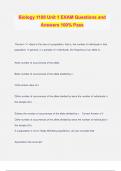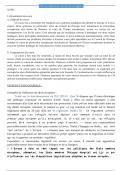Exam (elaborations)
PSYC 450 Drugs and Behaviour final exam tips questions to consider (from Unit 1-20) Athabasca University
- Course
- Institution
PSYC 450 Drugs and Behaviour final exam tips questions to consider (from Unit 1-20) Athabasca University
[Show more]





